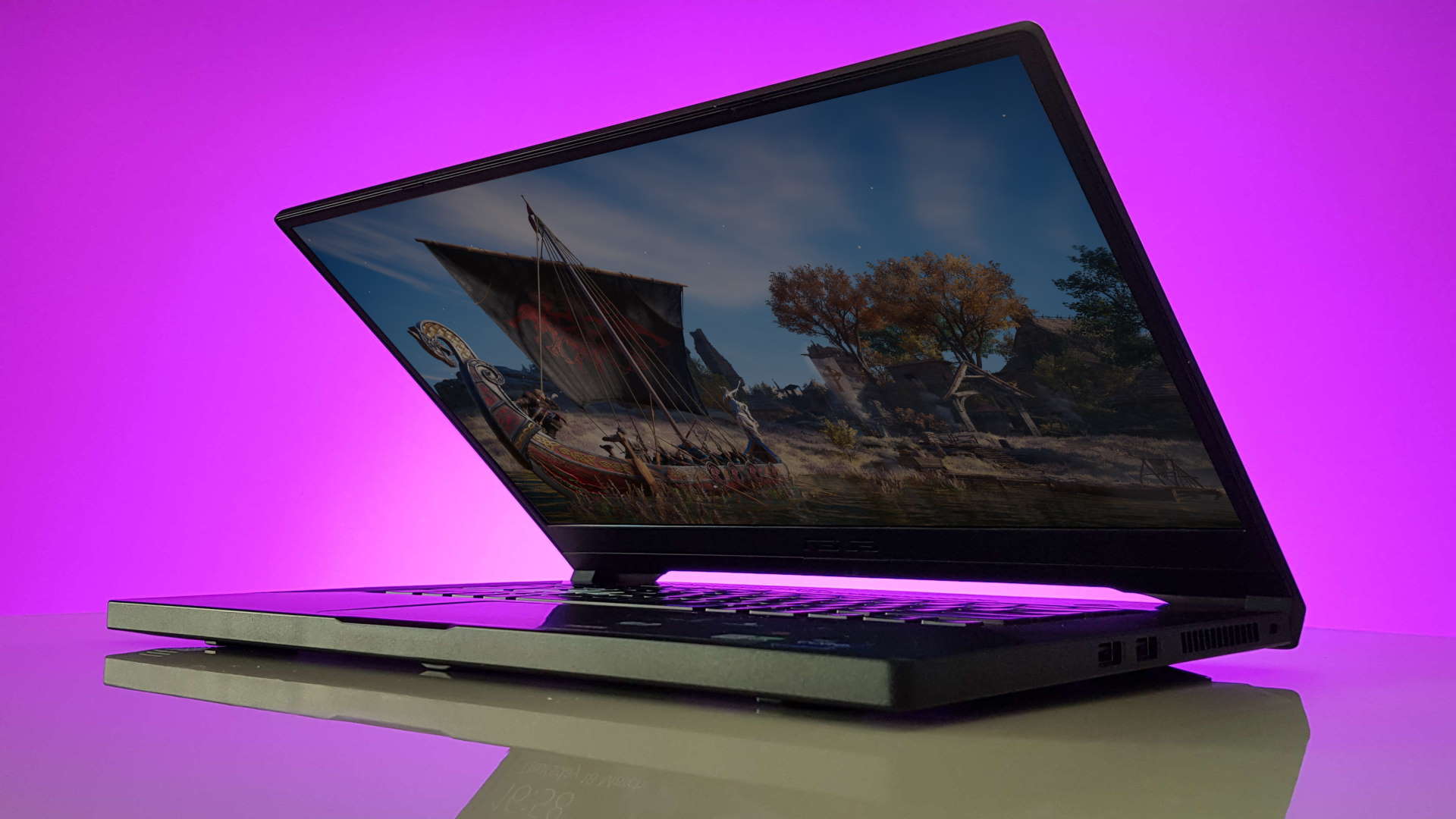Our Verdict
The first Tiger Lake gaming laptop might be a quad-core beast, but it's a quality, focused machine, offering the RTX 3070 in its most affordable mobile guise yet.
For
- Decent price
- Nvidia RTX 3070
- Thin and light
- Great overall spec
Against
- Quad-core CPU does have some limits
- Weak battery life
PC Gamer's got your back
The Asus TUF Gaming Dash 15 is a bit of an oddity in recent gaming laptop terms. Sure, it's sporting the latest in Nvidia's RTX 30-series graphics silicon, with the GeForce RTX 3070 sitting pretty in its svelte chassis, but this is a different CPU than you'll have seen in most of the notebooks we've reviewed so far.
This isn't another of Intel's old 10th Gen Comet Lake chips, paired with the latest Nvidia GPUs, and it's not one of the impressively powerful new AMD Ryzen 5000-series mobile CPUs either, this is actually one Intel's latest 11th Gen Tiger Lake processors making with the heavy maths.
The Intel Core i7 11370H at its heart represents the vanguard for Tiger Lake's charge on 2021's gaming laptop market. This then is the new Tiger Lake H35 CPU, not one of the many-core big bois set to arrive later this year. Though admittedly it feels like a bit of a stop-gap measure until they do. The difference? This i7 11375H is a 35W quad-core, eight-thread CPU, heavily based on the existing 15W or 28W 11th Gen chips we've seen in thin-and-light machines such as the Razer Blade 13 Stealth.
Though this design is scaled up to be able to peak at 5GHz, and that's a level none of the lower-spec chips have so far been properly capable of. Combined with the updated Willow Cove core, which offers single-threaded performance some 15 percent up on the 10th Gen H-series chips, that is what makes this Tiger Lake H35 chip capable of delivering a new style of notebook: The ultraportable gaming laptop. Or so says Intel.
The Asus Dash 15 is certainly portable. It's a 15-inch machine, but its chassis is slimmer than you'll find on any of the other TUF Gaming designs. It's also impressively light for an RTX 3070-powered gaming laptop.
Screen size: 15-inch
Resolution: 1920 x 1080
Refresh rate: 240Hz
CPU: Intel Core i7 11370H
GPU: Nvidia RTX 3070 (85W)
Memory: 16GB DDR4-3200
Storage: 1TB NVMe SK Hynix SSD
I/O: 1x 3.5mm audio jack, 1x RJ45 LAN port, 1x HDMI 2.0b, 3x USB 3.2 Gen1 Type-A, 1x USB 4 Type-C
Price: $1,699 | £1,400
Backing the CPU/GPU pairing up is 16GB of DDR4-3200 memory, a 1TB NVMe SK Hynix SSD, and a 15-inch, 1080p IPS display with a 240Hz refresh rate. There's even a frickin' LAN port as well as Wi-Fi 6, when's the last time you saw that in a slimline gaming laptop? Sadly there's no Advanced Optimus, but the integrated Intel Xe GPU is more than capable of running the display at 240Hz on its own without whirring the Nvidia silicon up.
That's an important distinction, because I've also been recently testing the Razer Blade 15 Advanced with its 1080p 360Hz screen. It doesn't come with Advanced Optimus either, despite sporting the rest of the Max-Q 3rd Gen shiz. And because it's just running a 10th Gen Intel chip, albeit a high-spec one, it's integrated GPU cannot cope with the rigours of super high refresh rates.
That becomes a problem for the Razer where you simply can't get the proper refresh rate in some games either, despite the system switching to the discrete graphics card. To be sure of getting the full refresh rate in Windows and in-game you'd need to always have the Razer machine plumbed into the Nvidia card, and that's not the case with this Tiger Lake H35 laptop.
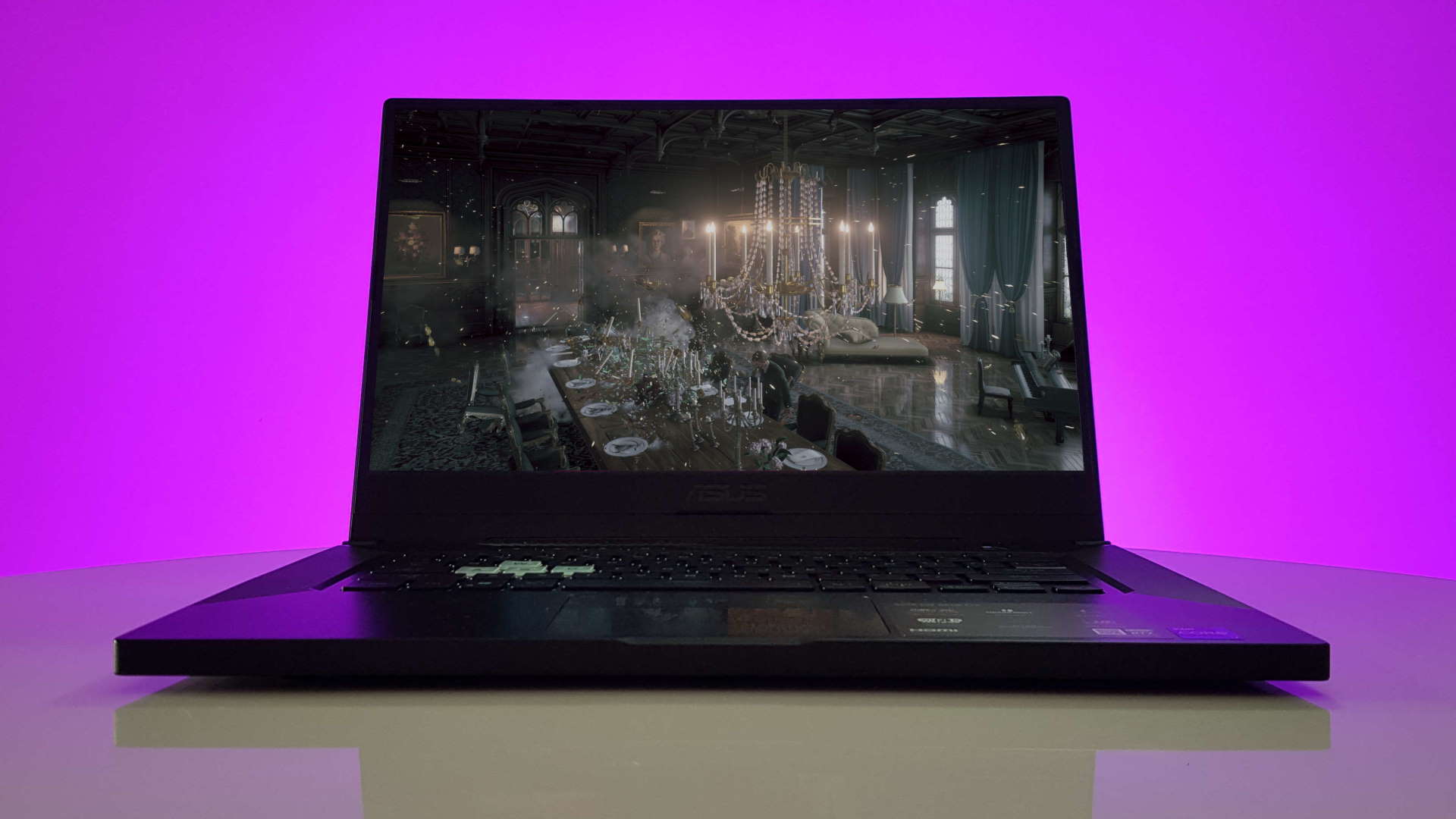
Gaming performance
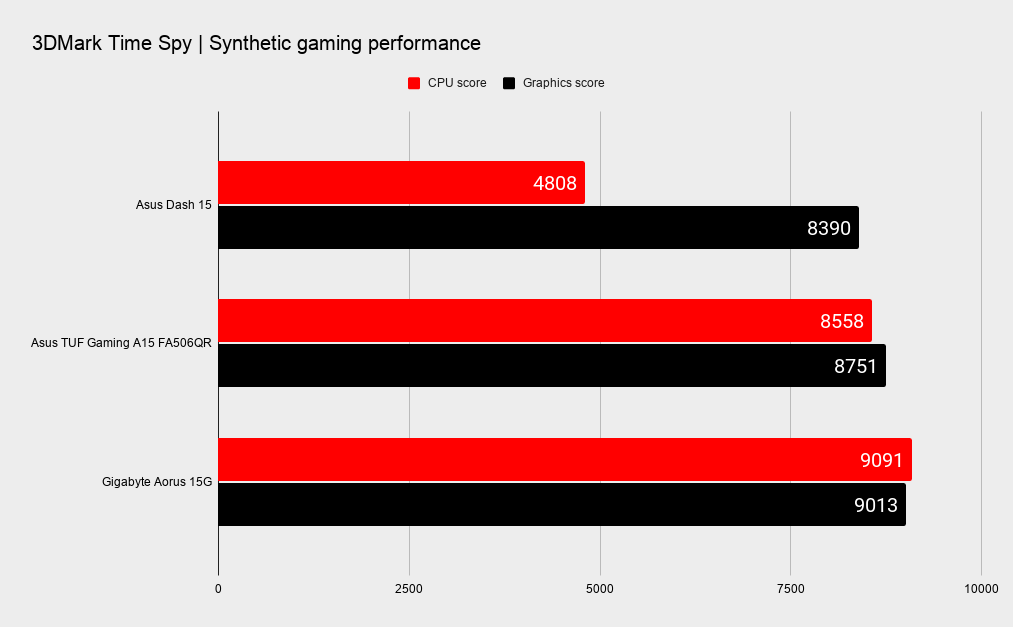
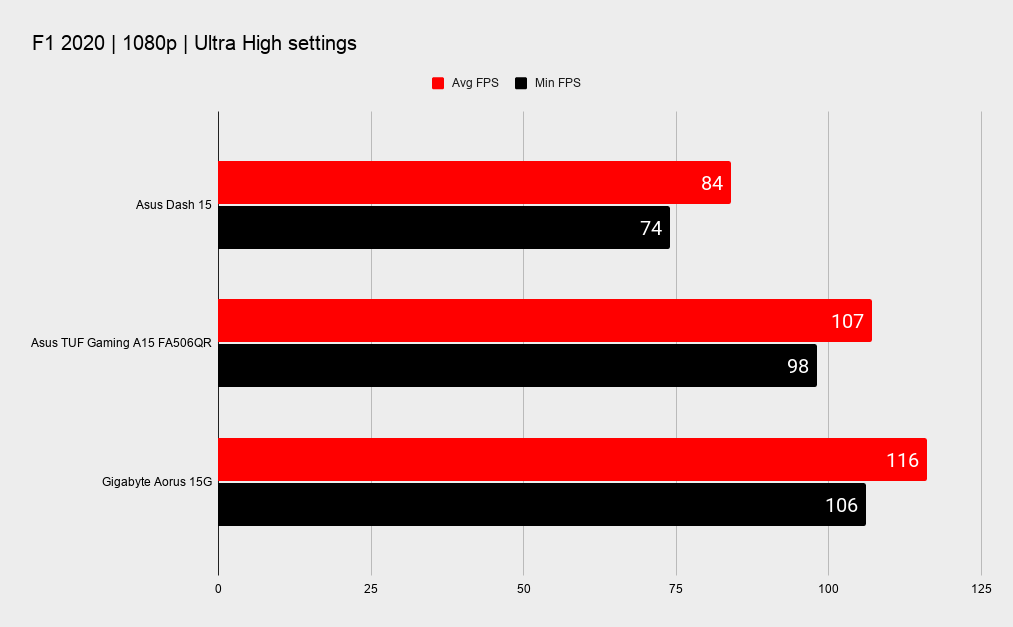
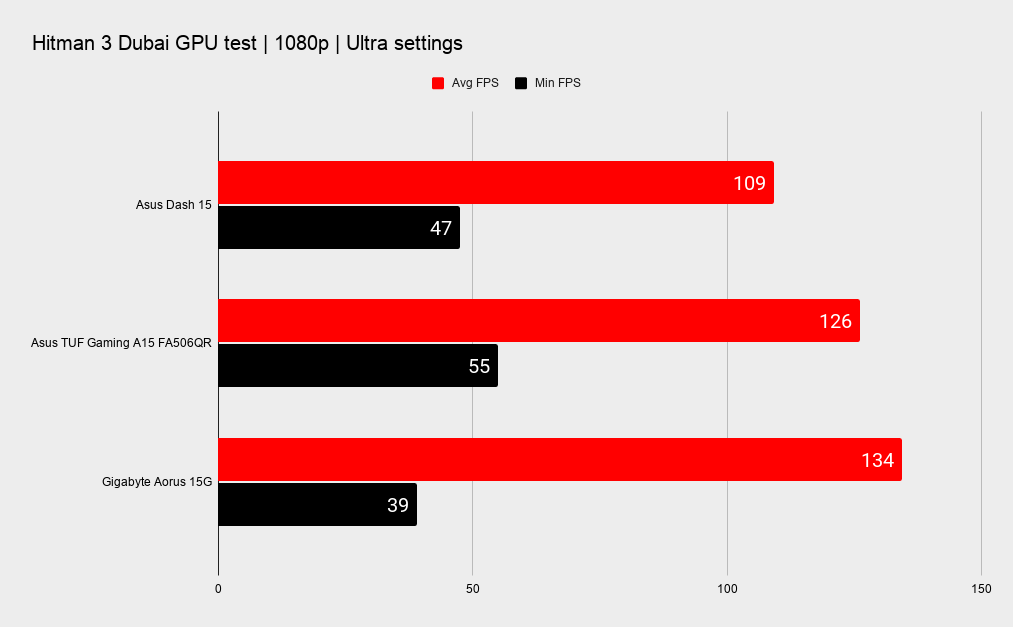
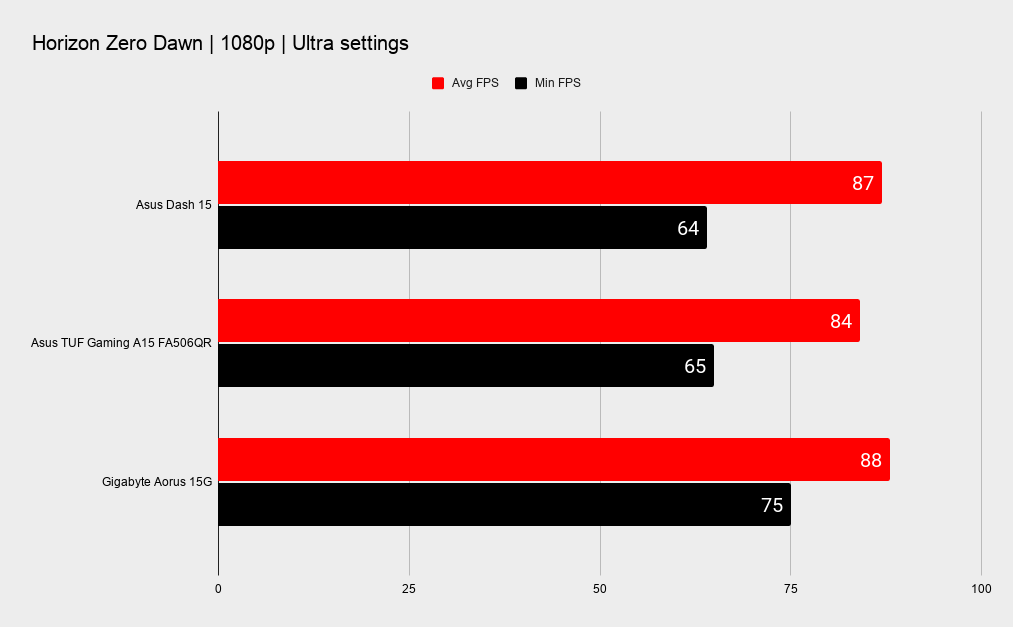
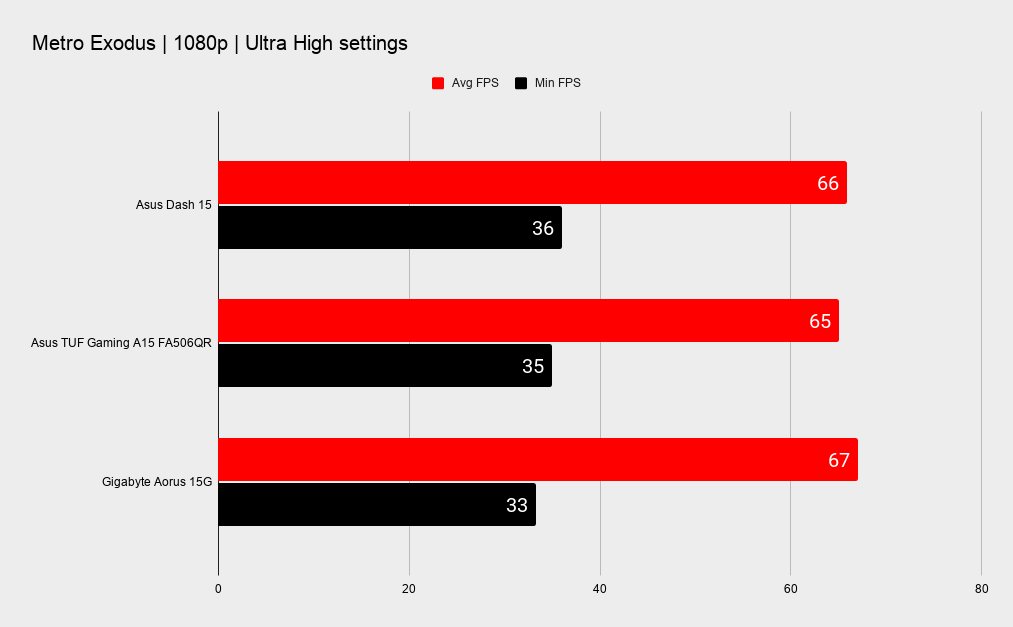
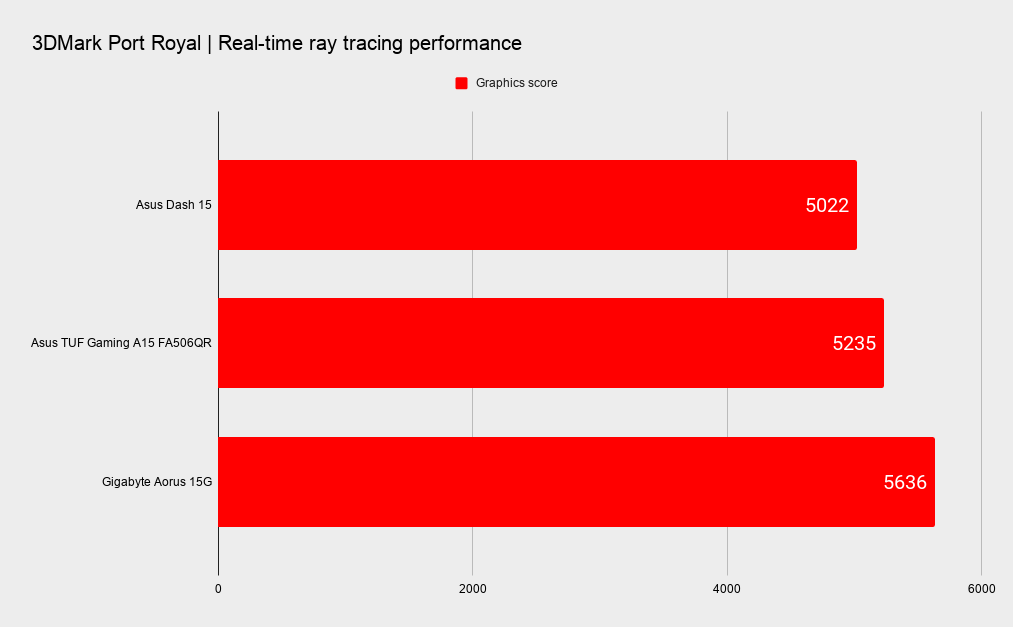
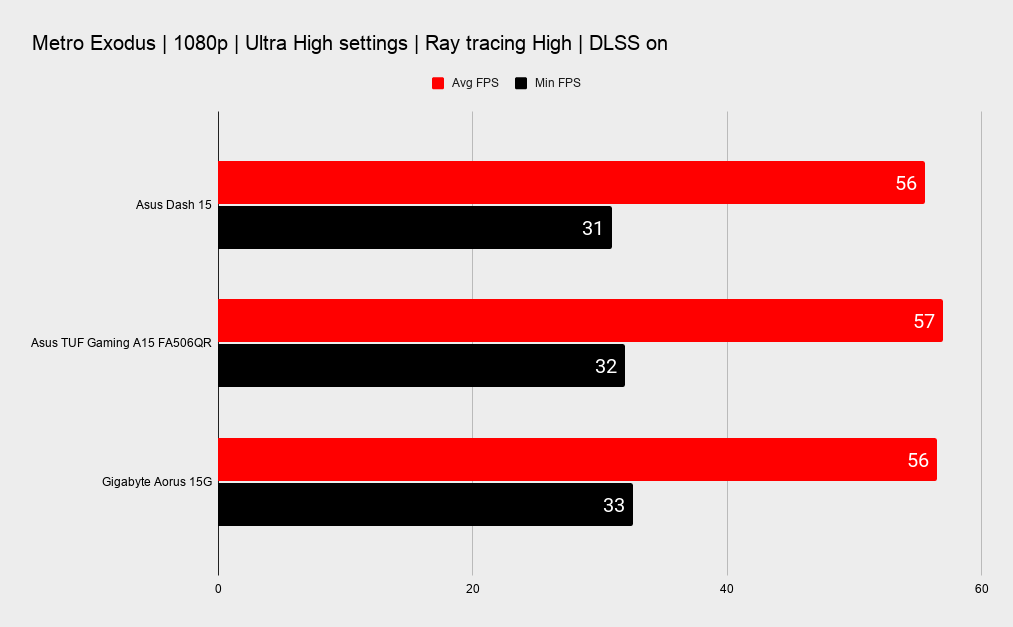
System performance
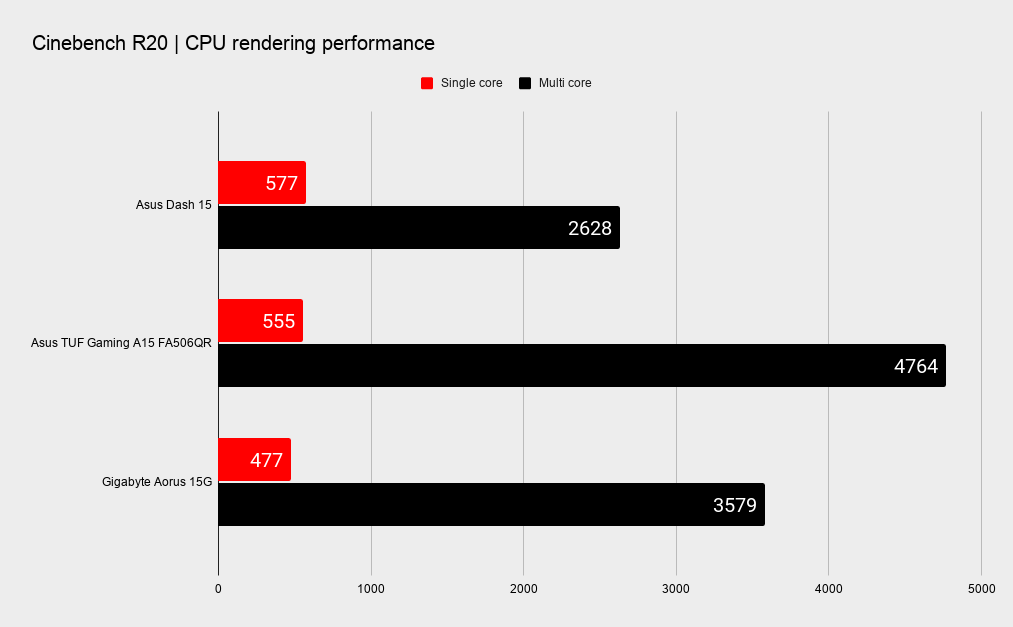
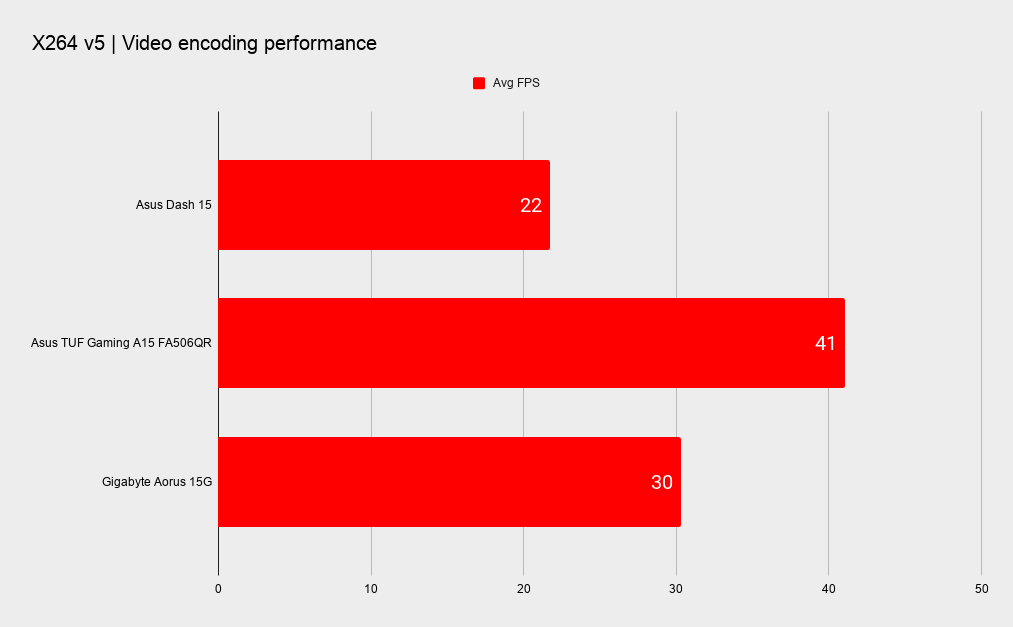
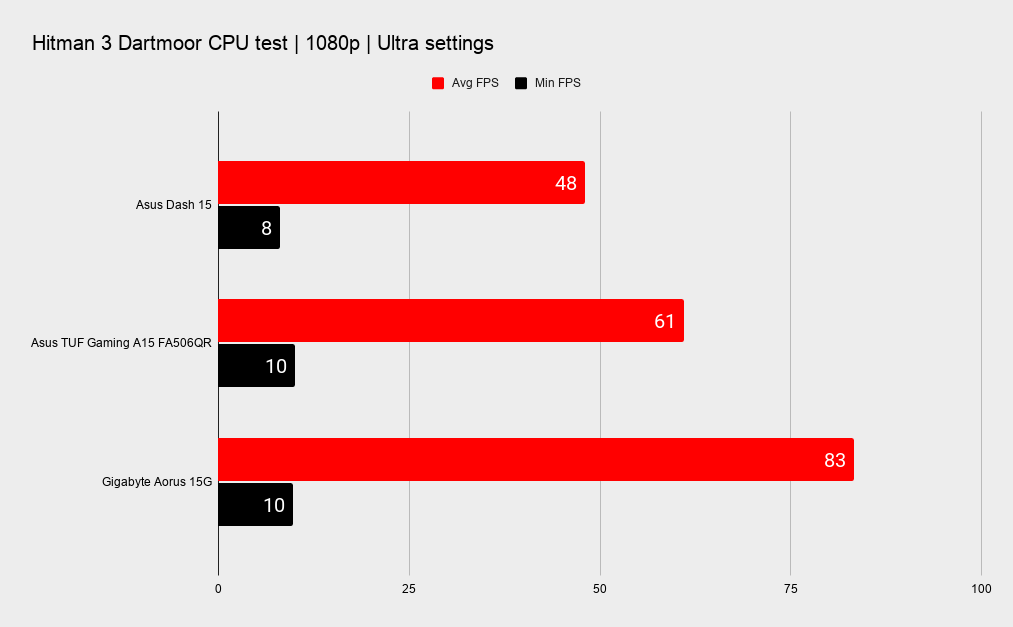

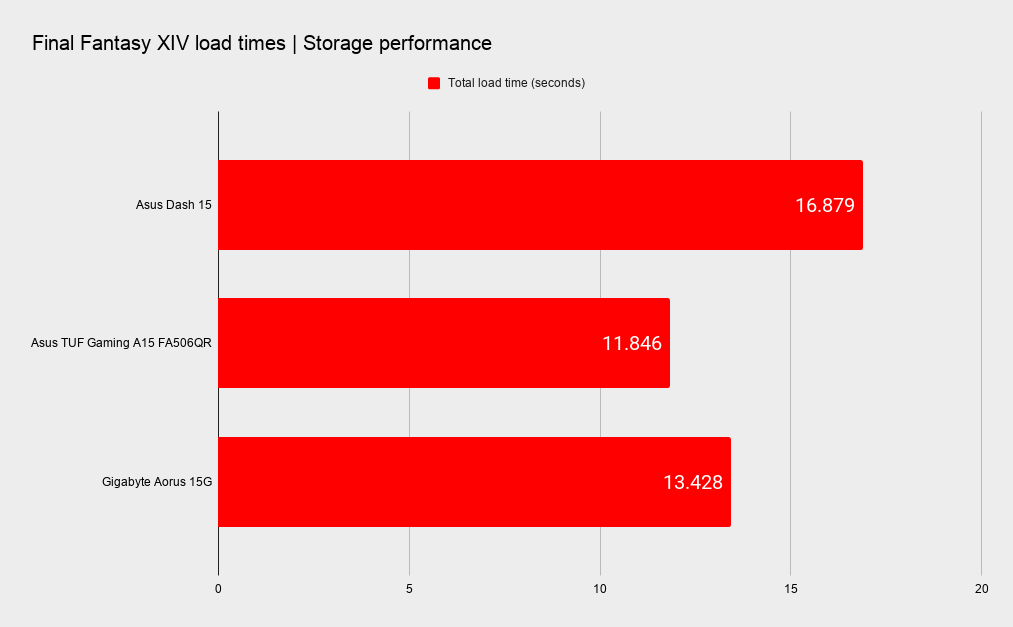
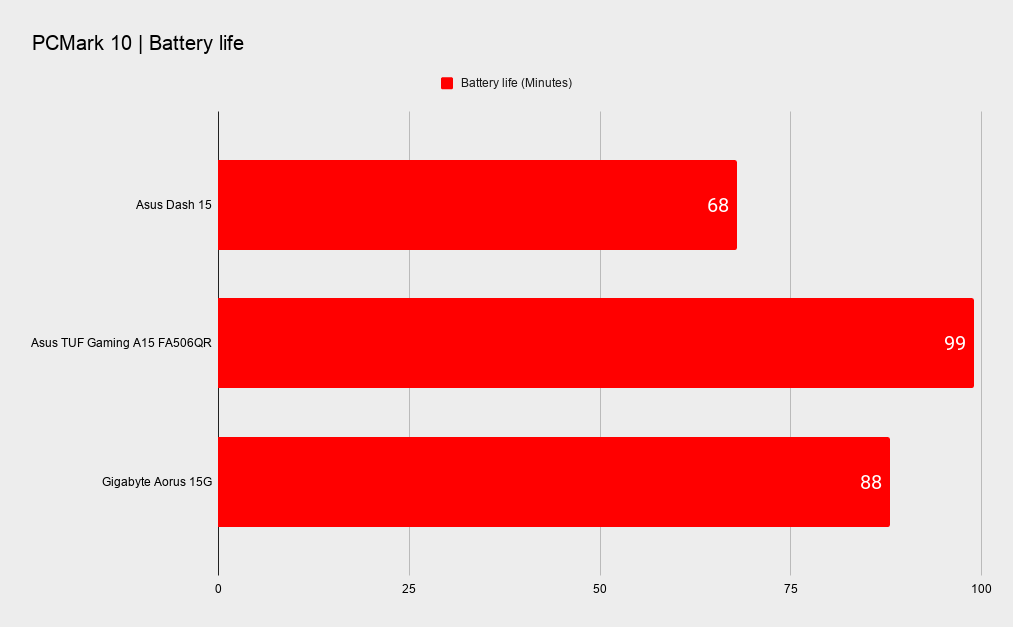
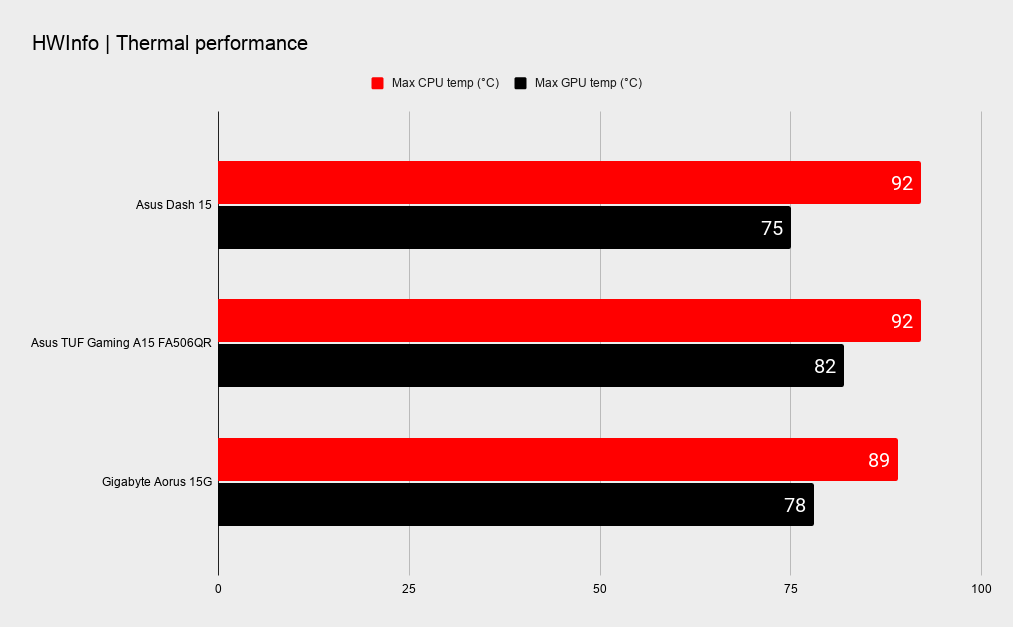
Because one RTX 3070 doesn't necessarily match with another, it's worth pointing out that to fit in with the ultraportable gaming laptop aesthetic Intel is proposing, Asus has opted to pair the Tiger Lake H35 chip with the 85W variant of the RTX 3070. And that inevitably means a compromise in overall performance, but ever it was thus when taking gaming components and shrinking them down to fit a skinny li'l chassis.
You do also have a bit of a performance hit from the quad-core CPU itself. You can see that when it's put alongside the TUF Gaming A15, with its AMD Ryzen 7 5800H CPU, and the Gigabyte notebook with its equally eight-core i7 10870H. Those are two other RTX 3070 machines, though admittedly more expensive ones, with higher wattage versions of that GPU.
While the single-threaded performance is impressive in and of itself, when it comes to CPU-intensive tests—such as Hitman 3's Dartmoor bench and titles and resolutions where you're not GPU-bound—you can see where the Tiger Lake H35 chip is holding performance back.
But that's not evident in everything, however. And in the more GPU-limited games we test, in Metro Exodus and Horizon Zero Dawn, for example the gaming performance is on par with even the 105W version of Nvidia's RTX 3070 seen in the Gigabyte Aorus 15G. And in modern titles, at the highest settings, you're more likely to see the system being GPU-bound which plays to the tight focus on gaming that Asus and Intel is aiming for here.
And in the instances where the CPU and low-wattage GPU might be putting a cap on performance it's still not really too much of a detriment in the grand scheme of gaming. Especially when you consider the Dash 15 is the most affordable of all the RTX 3070-based gaming laptops we've tested since launch. I'm not going to call a $1,700 notebook 'cheap' but for the spec you're getting Intel's first 11th Gen gaming laptop feels like it's priced aggressively enough for its lowly core-count.

It's not like the rest of the components are a compromise either. The memory is quick, the screen bright, sharp, and swift, and SSD storage relatively capacious. The redesigned TUF Gaming chassis works for me too. I've been a fan of Asus' lower cost range, and the chassis they clothe their parts in for a while now, and this slimmer, lighter design makes this 15-inch machine genuinely portable.
Often you'll find slimline designs costing more than their chunkier brethren, with the Razer Blade a perfect case in point. That's a beautiful machine, sporting a skinny MacBook aesthetic, but has to compromise on overall performance to fit its design. But it's also vastly more expensive than speedier, far thicker gaming laptops.
The Dash 15, however, feels like it's going in a more sensible direction. Yes, it's compromising on performance to squeeze its innards into a lighter, slimline chassis, but it's doing so without any price premium attached to it. In fact it's cheaper than any of the other RTX 3070 systems we've toyed with.
The TUF Gaming A15 we've tested it against, with its powerful Ryzen 5800H CPU, is a much bigger machine and a much more expensive one to boot.
The slim design of the Dash 15 does sometimes make it a rather loud laptop when it really gets going, but then so is the TUF Gaming A15 too. But it keeps its GPU more impressively chilled, though the fan noise is most definitely noticeable. It's not as aggressive as some we've heard, but it's definitely a system you're going to want to pair with a gaming headset.
You don't get the benefits of Nvidia's Whisper Mode 2.0 either, as this machine has not been setup to use it, despite the RTX 3070 offering the feature itself. GeForce Experience notes that it is not enabled by the notebook. Sure, it's only really useful in polite company where you don't want to bother other peoples' ear holes with the whirring of your fans, but it has its moments for sure.
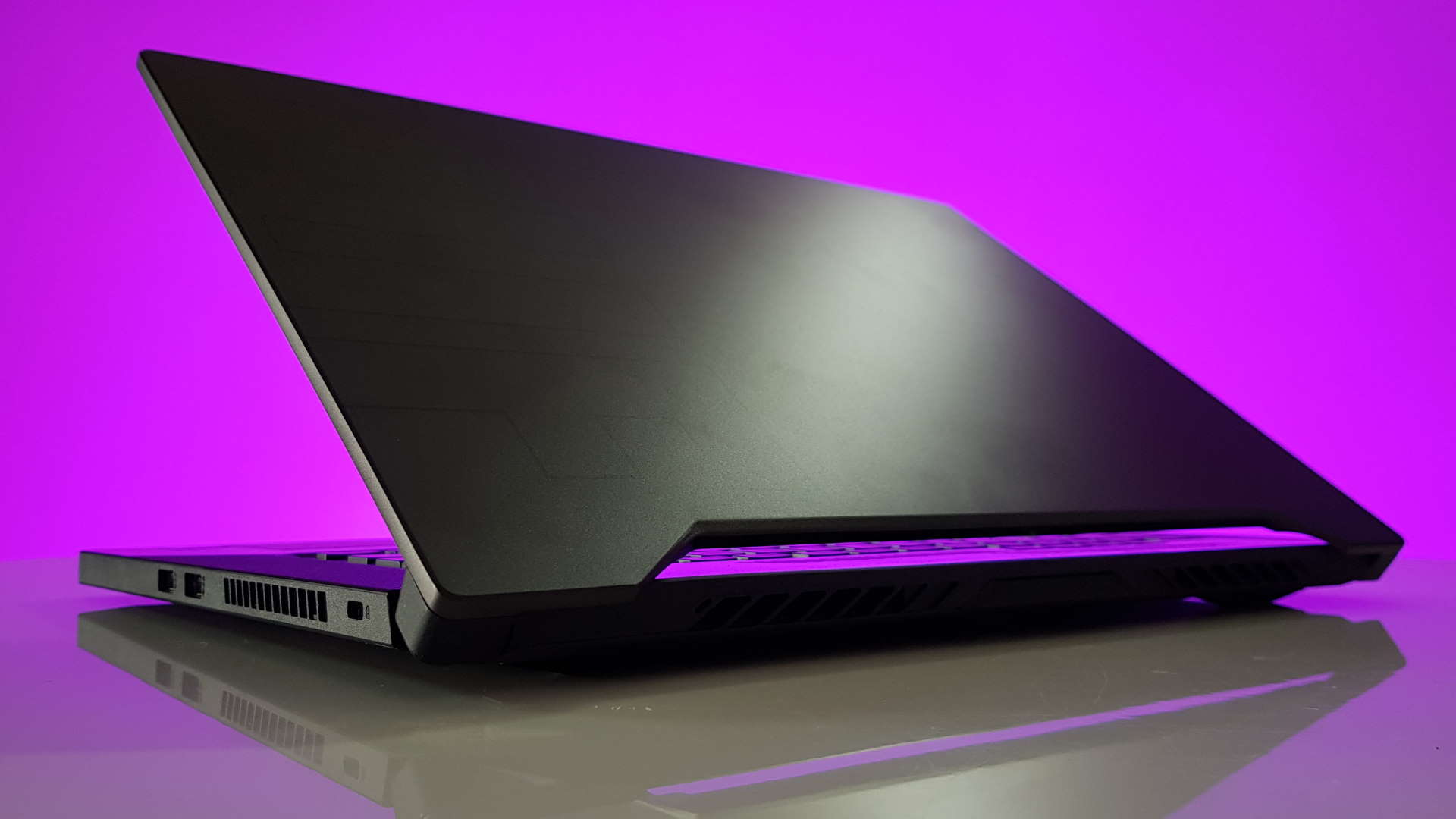
My biggest issue with the Dash 15, however, has nothing to do with the components and more to do with the battery. At 76 Whrs it shouldn't be such an issue, but the fact that even with the 10nm Tiger Lake CPU this machine can only just squeeze a notch above an hour of gaming on battery is pretty disappointing. I'm used to paltry gaming battery life on laptops, but it has been improving, and I thought that might be one place the Dash 15 could excel.
Honestly, it's not a deal-breaker. You'll spend most of your game-time plumbed into a power socket anyways, so that feels like a minor point in reality. And if Intel's promise of ultraportable gaming laptops also means affordable well-specced ones like the Dash 15 become commonplace then I am all for it. It's also not like this powerful machine can't be used for more productivity shenanigans, but I do appreciate the laser-focus on gaming as its raison d'être.
I honestly don't need an eight-core processor when I'm just in it for the gaming; give me a fat GPU, a beautiful screen, and a decent chassis and I'm happy.
The first Tiger Lake gaming laptop might be a quad-core beast, but it's a quality, focused machine, offering the RTX 3070 in its most affordable mobile guise yet.

Dave has been gaming since the days of Zaxxon and Lady Bug on the Colecovision, and code books for the Commodore Vic 20 (Death Race 2000!). He built his first gaming PC at the tender age of 16, and finally finished bug-fixing the Cyrix-based system around a year later. When he dropped it out of the window. He first started writing for Official PlayStation Magazine and Xbox World many decades ago, then moved onto PC Format full-time, then PC Gamer, TechRadar, and T3 among others. Now he's back, writing about the nightmarish graphics card market, CPUs with more cores than sense, gaming laptops hotter than the sun, and SSDs more capacious than a Cybertruck.
